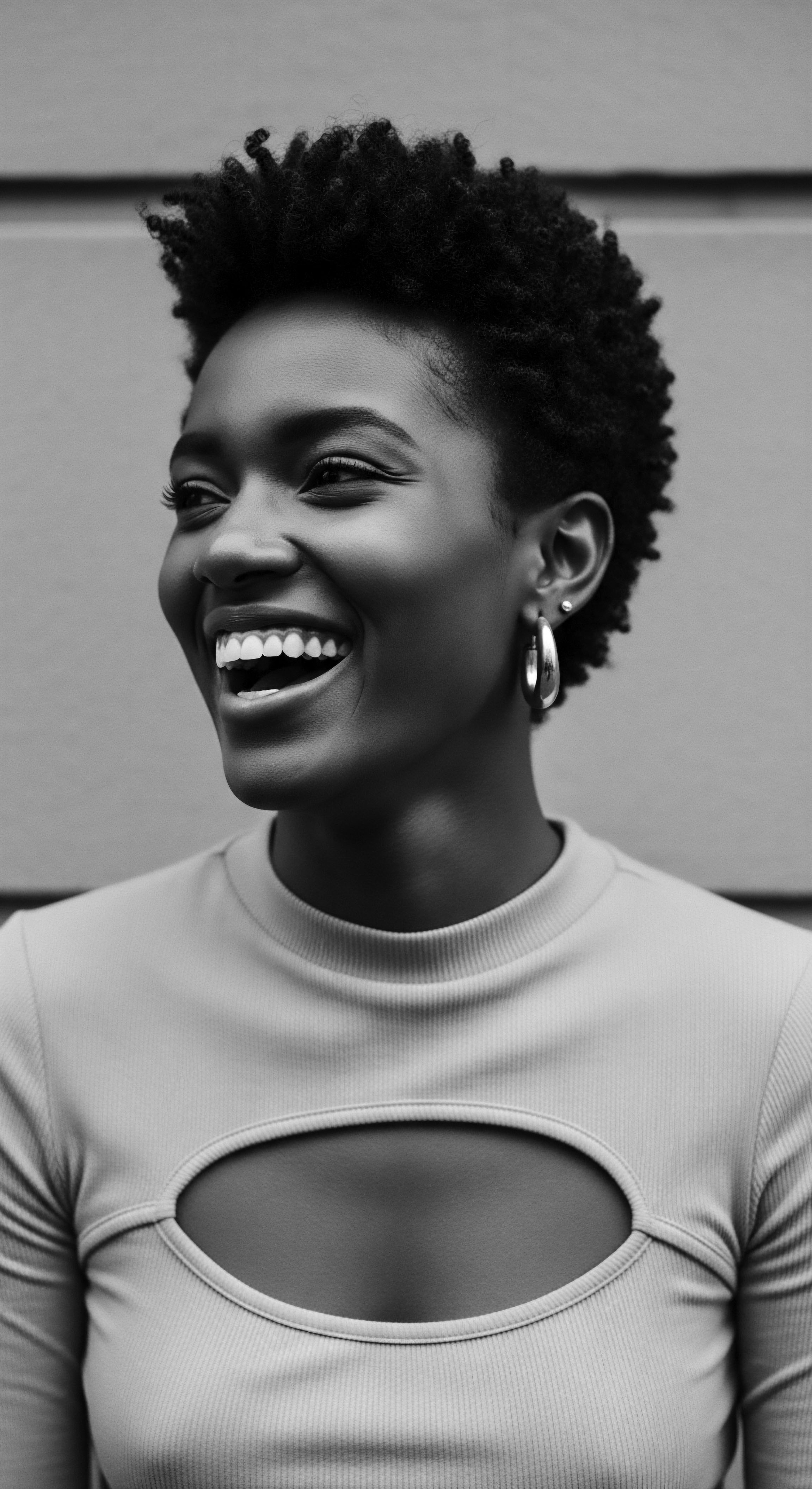
Roots
When the first droplets of a golden oil meet the coiled spirals of textured hair, a dialogue begins. It is a conversation spanning centuries, a whispers from ancient traditions echoing in modern understanding. For those whose strands tell stories of distant lands and resilient journeys, the question of plant oils and their protection against breakage and moisture loss resonates not merely as a matter of cosmetic science. It speaks to a profound connection with heritage, a living legacy passed down through generations.
Consider for a moment the rich tapestry of human hair , specifically the captivating architecture of textured hair. Its unique structure, characterized by varied curl patterns and an often more open cuticle, renders it more prone to dryness and fracture. This biological reality, however, was observed and understood by ancestors long before microscopes revealed cellular intricacies. They instinctively sought remedies in the natural world around them, their knowledge shaped by generations of practical application.
Can plant oils truly offer a shield, a balm, for these precious strands? The answer, woven into the very fabric of history and substantiated by contemporary inquiry, is a resonant affirmation. Plant oils have held a central position in hair care across numerous African and Afro-diasporic communities for millennia, serving as vital agents against environmental rigors and styling pressures. Their enduring presence in ancestral rituals suggests an intrinsic understanding of their protective qualities, long before the scientific lexicon described their molecular behaviors.

Hair’s Ancestral Blueprint
To appreciate the profound role of plant oils, one must first recognize the inherent qualities of textured hair. Unlike its straighter counterparts, textured hair possesses a unique elliptical cross-section and distinct points of curvature along its length. These natural bends, while beautiful, create areas of mechanical weakness, making it inherently more susceptible to breakage under stress.
Furthermore, the cuticle, the hair’s outermost protective layer, often sits more elevated in textured hair, allowing moisture to escape more readily. This leads to what is often described as chronic dryness, a recurring challenge for those with coils, kinks, and waves.
The distinctive structure of textured hair, with its natural bends and elevated cuticle, amplifies the need for external agents to combat dryness and reduce breakage.
Ancestral wisdom, though unequipped with scanning electron microscopes, arrived at a similar understanding through careful observation and lived experience. Communities across Africa understood that certain botanical extracts provided both lubrication and a seal. They intuitively knew that a well-nourished strand possessed greater flexibility and resilience.
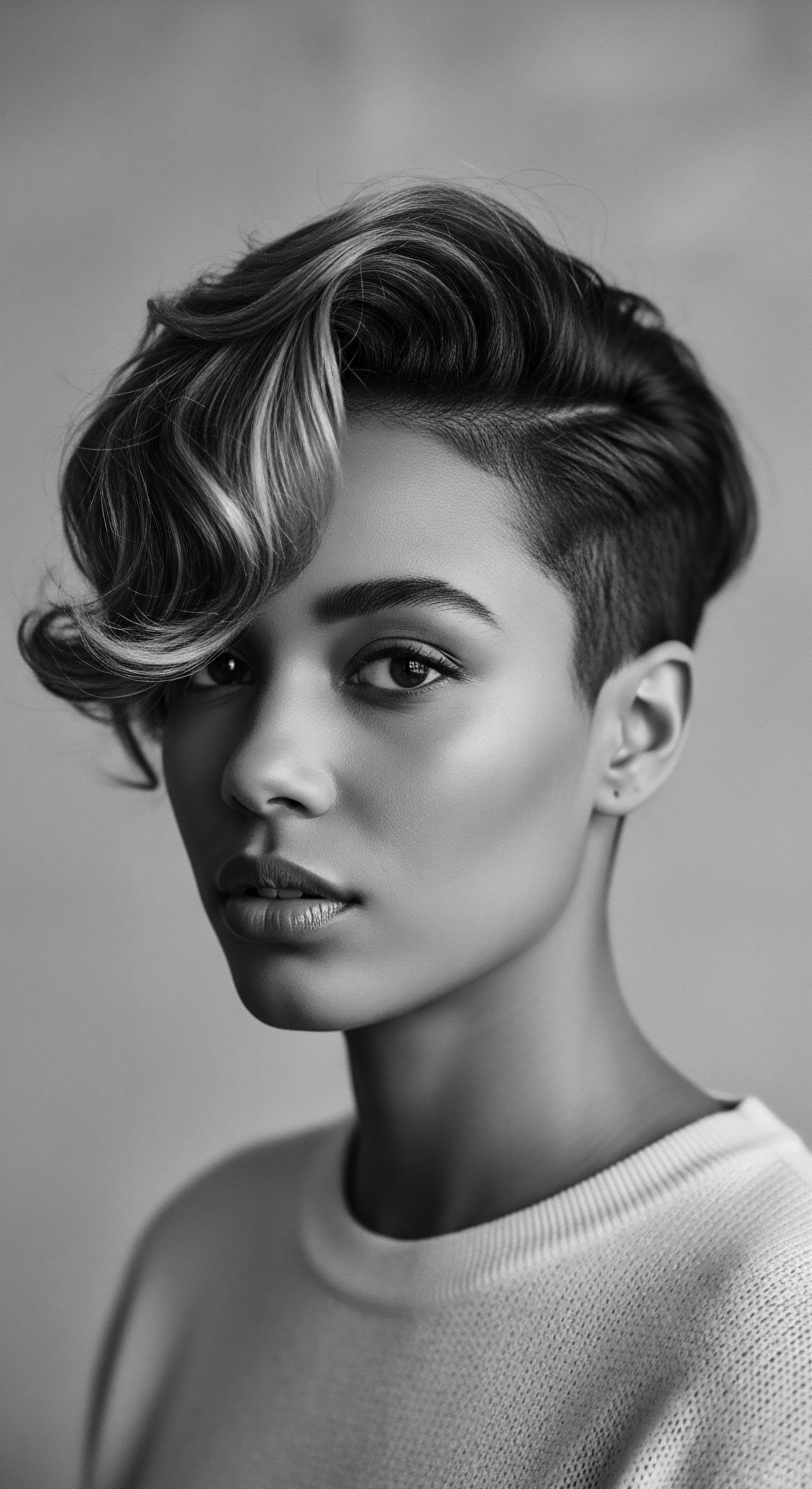
The Language of Strands
The vocabulary surrounding textured hair today often includes terms like “porosity,” “curl pattern,” and “protein sensitivity.” Yet, ancient traditions also held a deep lexicon, perhaps not formalized in scientific terms, but certainly understood in practice.
- Low Porosity ❉ In traditional contexts, hair that seemed to repel water or take a long time to saturate might have been recognized as needing lighter oils, perhaps those that could absorb without leaving a heavy film.
- High Porosity ❉ Hair that quickly absorbed water but dried out just as fast would have been treated with heavier, sealing oils to retain the precious moisture it so readily took in.
- Hair Type and Growth ❉ The varied classifications of hair types, from the tightly coiled to the looser wave, each had corresponding care practices, often involving specific plant oils, for maintaining strength and encouraging growth.
This inherent understanding, passed verbally and through demonstration, allowed for the development of highly specific, localized hair care regimens, many of which relied heavily on the properties of indigenous plant oils.

Growth Rhythms Across Generations
The journey of hair, from growth to shedding, is a cyclical process. Ancestral communities tied this cycle to broader rhythms of life and the earth. Factors influencing hair growth, from nutrition to environmental exposure, were not just observed but actively managed through diet and protective measures.
Plant oils played a significant role here, not only by providing external protection but also by nourishing the scalp, seen as the very soil from which the strands emerged. The practice of scalp oiling, documented across diverse African cultures, was not simply about surface-level application; it was a deeply rooted belief in maintaining the health of the scalp to support robust hair growth.
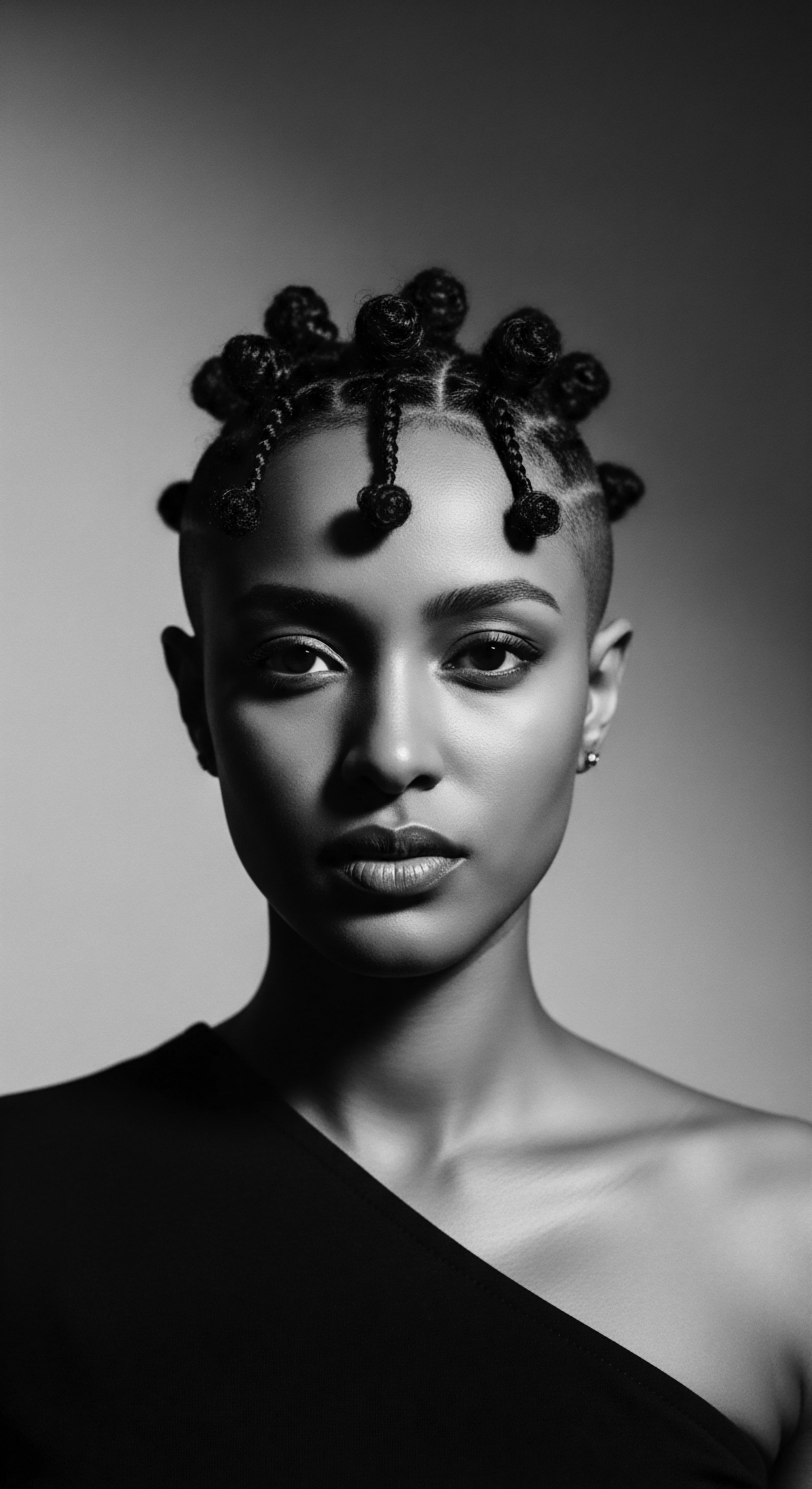
Ritual
The application of plant oils to textured hair transcends mere product use; it forms a sacred ritual, a deliberate act of care and connection that bridges the past with the present. Across the diaspora, hair oiling has been a deeply ingrained practice, often performed with care, fostering moments of bonding and cultural continuity. These rituals, whether daily acts or ceremonial preparations, illustrate the practical efficacy and cultural significance of plant oils.

The Ceremonial Hand
From West Africa to the Caribbean, and into the homes of African Americans, the application of plant oils has been a communal and intimate experience. Picture a child seated between a mother’s or grandmother’s knees, their scalp gently massaged with shea butter , palm oil , or castor oil . These moments were not only about conditioning the hair but about the transmission of generational wisdom, stories, and love.
The very act became a non-verbal affirmation of identity and belonging. This traditional practice speaks volumes about the historical understanding that plant oils provided much-needed lubrication for handling highly coily hair, reducing friction and preventing immediate breakage during detangling or styling.
The use of plant oils in these rituals was deliberate, chosen for their perceived ability to soften strands, improve elasticity, and impart a protective coating. In many communities, specific oils were favored for particular purposes ❉ heavier oils for sealing in moisture in drier climates, lighter ones for daily sheen or scalp health.

Styling Echoes
How have plant oils shaped the heritage of textured hair styling? They have been indispensable companions to countless styles, from simple daily maintenance to elaborate protective creations.
- Protective Styling ❉ Styles like braids , twists , and cornrows , deeply rooted in African traditions, often benefited from pre-application of oils and butters to ensure the hair remained pliable, less prone to snapping during the intricate process of styling, and sealed against environmental elements. This layered application created a micro-environment for the hair, minimizing moisture loss over extended periods.
- Definition and Shine ❉ For styles meant to showcase the natural curl, oils could be applied to enhance definition and gloss. A light application could smooth the cuticle, reducing frizz and allowing the hair’s natural pattern to appear more structured.
- Thermal Care ❉ Even when heat was introduced, albeit traditionally through natural sun drying or heated stones, oils might have served as a subtle buffer, though the full science of heat protection as we understand it today is a modern development.
The Basara Arab women of Chad offer a compelling example of ancestral practice. They have traditionally used Chebe powder , a blend of natural herbs, seeds, and plants, mixed with oils or butters and applied to damp, braided hair. This practice does not promote growth from the scalp directly but rather focuses on length retention by preventing breakage and locking in moisture, allowing the hair to grow longer over time. This specific historical instance underscores the ancient understanding of oils as key components in a holistic approach to hair health, particularly for managing breakage in highly textured hair.

Tools of Legacy
The tools accompanying these rituals were often simple, yet profoundly effective, and plant oils amplified their efficacy. Wide-toothed combs, fingers, and even repurposed items were used in conjunction with oils. For instance, the combing process for textured hair, notoriously difficult when dry, becomes significantly easier and less damaging with the application of oils, which provide slip and reduce friction between strands and the tool.
This simple lubrication is a primary mechanism by which oils protect against mechanical breakage during routine care. The absence of access to such tools and oils during the transatlantic slave trade severely impacted the hair health of enslaved Africans, leading to matted, tangled, and damaged hair, revealing the profound reliance on these natural remedies.
Today, while new tools and technologies abound, the fundamental principles remain. The modern detangling brush, for example, performs optimally when hair is wet and coated with a conditioning agent, a role plant oils have long played in ancestral practices. The continuity speaks to the enduring wisdom embedded within these heritage care traditions.
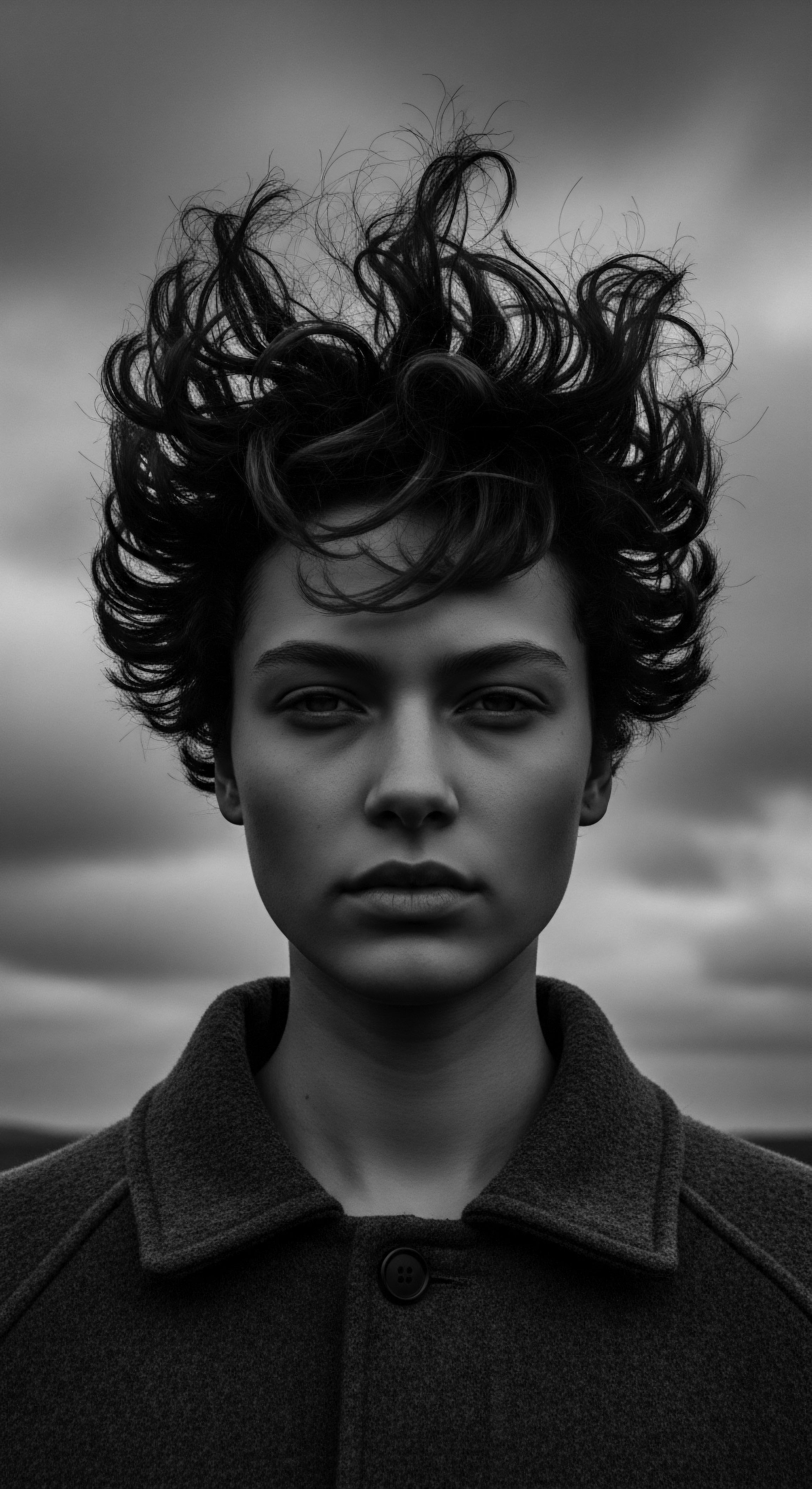
Relay
The conversation about plant oils and textured hair protection takes on deeper layers when examining the intricate relationship between ancestral knowledge and contemporary scientific inquiry. Modern understanding often validates, or at least explains, the long-observed benefits of these botanical wonders, bringing forth a richer appreciation for their enduring role in safeguarding hair against environmental aggressors and internal moisture depletion.

Daily Rites of Preservation
Plant oils, in their purest form, are not just lubricants; they are complex compositions of fatty acids, vitamins, and antioxidants. This molecular diversity is what grants them their multi-pronged ability to shield textured hair.
For moisture retention, plant oils serve as an occlusive layer. Consider how a coating of coconut oil or jojoba oil can sit on the hair surface. This external film acts as a barrier, slowing the rate at which water evaporates from the hair shaft, effectively locking in hydration. This is particularly important for high porosity hair, where the cuticles are more open, causing moisture to escape quickly.
Oils like coconut oil, with their smaller, saturated fatty acid chains, can even penetrate the hair shaft, reducing protein loss and helping to strengthen the hair from within. This internal reinforcement contributes to the hair’s resilience, making it less prone to fracture.
Plant oils create a protective external barrier, slowing moisture loss, while select varieties penetrate to strengthen the hair’s internal structure against damage.
The protective action extends to breakage prevention. The lubrication provided by oils reduces friction during styling and manipulation, activities that can otherwise stress the delicate curves of textured hair. By smoothing the cuticle, oils minimize the snagging and tearing that leads to splits and breaks.
A study comparing the effects of different oils on human hair fibers highlighted how certain oils, such as argan oil, could affect the mechanical resistance of hair, particularly virgin strands, suggesting a lubricating effect on the outermost layers. While research continues to refine our understanding of how various oils interact with textured hair’s distinct architecture, the historical longevity of their use stands as a testament to their perceived benefits.

Nighttime’s Gentle Embrace
Ancestral wisdom deeply understood the significance of nighttime care for hair preservation. The practice of covering hair at night, often with scarves or headwraps, was not solely a matter of modesty or tradition; it was a fundamental strategy for maintaining hair integrity and preventing moisture loss. Plant oils were, and continue to be, integral to this practice.
The hair bonnet, a ubiquitous tool in many Black households, evolved from simpler head coverings that protected intricate hairstyles and minimized damage from friction against rough sleeping surfaces. When paired with plant oils, the protective qualities were amplified. A light coating of oil before wrapping hair at night helped to create a sealed environment, allowing the oil to deeply condition the hair while preventing the fabric from absorbing its natural moisture. This synergistic approach meant waking with softer, more pliable hair, greatly reducing mechanical stress during morning styling.
| Traditional Application Oiling scalp and hair before braiding |
| Scientific Explanation of Effect Provides lubrication, reducing friction and breakage during styling; seals moisture into the hair shaft. |
| Traditional Application Regular use of rich butters and oils |
| Scientific Explanation of Effect Forms an occlusive barrier on the hair surface, preventing water evaporation; some oils penetrate to reduce protein loss. |
| Traditional Application Nighttime wrapping with oil application |
| Scientific Explanation of Effect Minimizes mechanical friction from bedding, preserving style and preventing damage; creates a humid environment for oil conditioning. |
| Traditional Application The enduring wisdom of ancestral hair care, often centered on plant oils, finds compelling support in contemporary scientific understanding. |
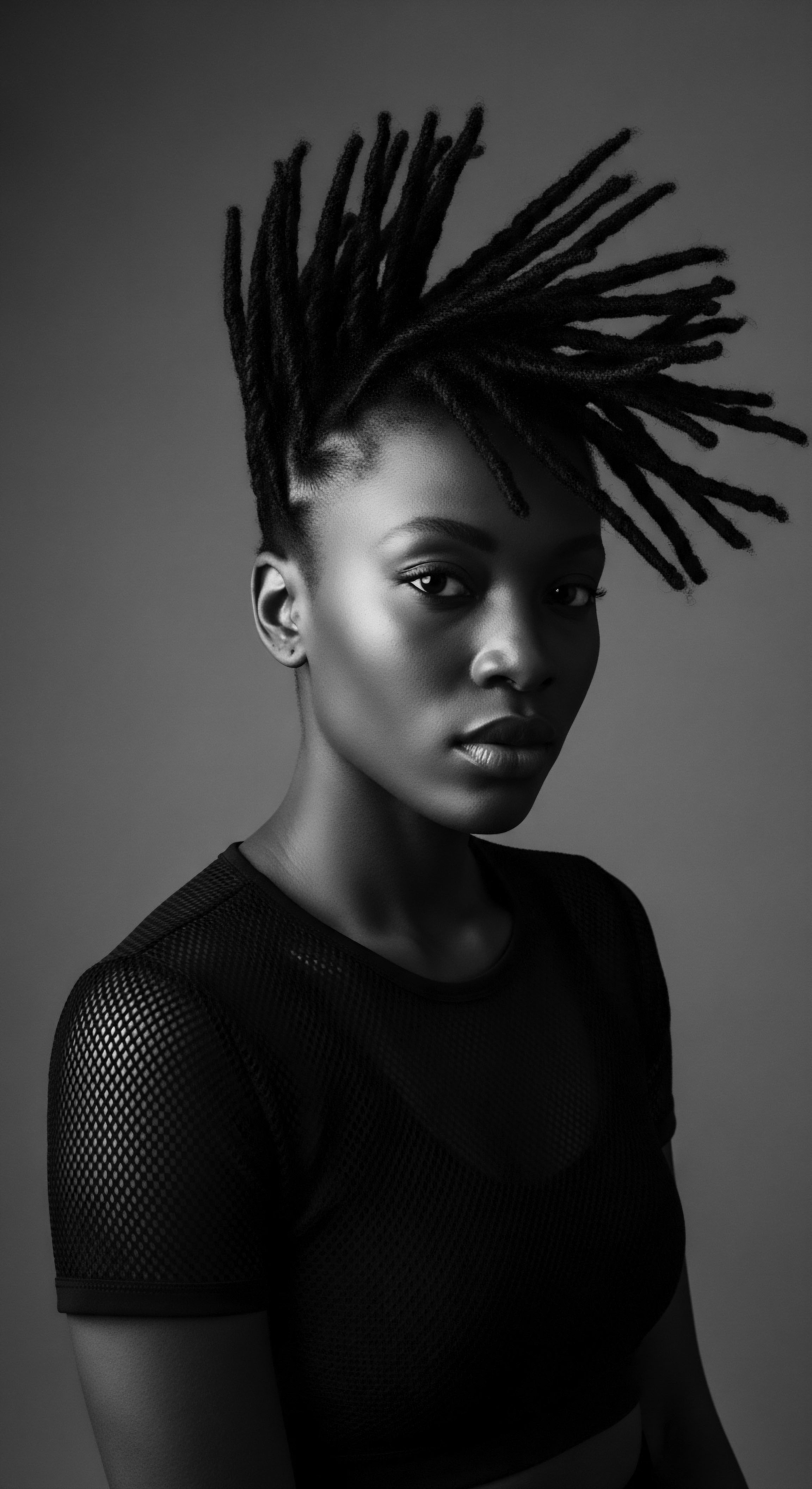
Unraveling Challenges Through Time
The challenges of dryness and breakage are not new to textured hair. They are part of its legacy, and so too are the time-tested solutions that communities developed. Plant oils have been a consistent answer to these dilemmas.
Consider the historical context of hair health within diasporic communities. Forced displacement and the brutal conditions of slavery stripped enslaved Africans of their traditional tools, ancestral oils, and the time for communal hair care rituals. This loss directly contributed to widespread hair damage and scalp issues, underscoring the vital role these natural remedies played in maintaining hair health and identity. The subsequent reclamation of hair care practices, often involving rediscovered plant oils, became an act of resistance and cultural reassertion.
The modern natural hair movement, while embracing scientific advancements, also looks back to these ancestral practices, recognizing the deep wisdom embedded in the use of plant-derived ingredients. Jojoba oil, for instance, gained significant prominence in the 1970s, as the “Black is Beautiful” movement prompted a return to natural hair. Its ability to mimic the scalp’s natural oils and its effectiveness against dryness and breakage made it a favored choice, symbolizing a rejection of Eurocentric beauty ideals and an alignment with cultural authenticity.
A study on the penetration abilities of various oils into human hair fibers, while noting that external molecules may diffuse less homogeneously in textured hair compared to straight hair due to its unique cortical structure, still found that oil molecules were present in the cortical region of bleached textured hair. This research suggests that even for chemically altered textured hair, plant oils can reach the inner structure, offering a degree of protection, particularly a lubricating effect on virgin hair during fatigue tests. This evidence, though complex, does not contradict the centuries of observed benefits, but rather provides a deeper lens through which to comprehend them.
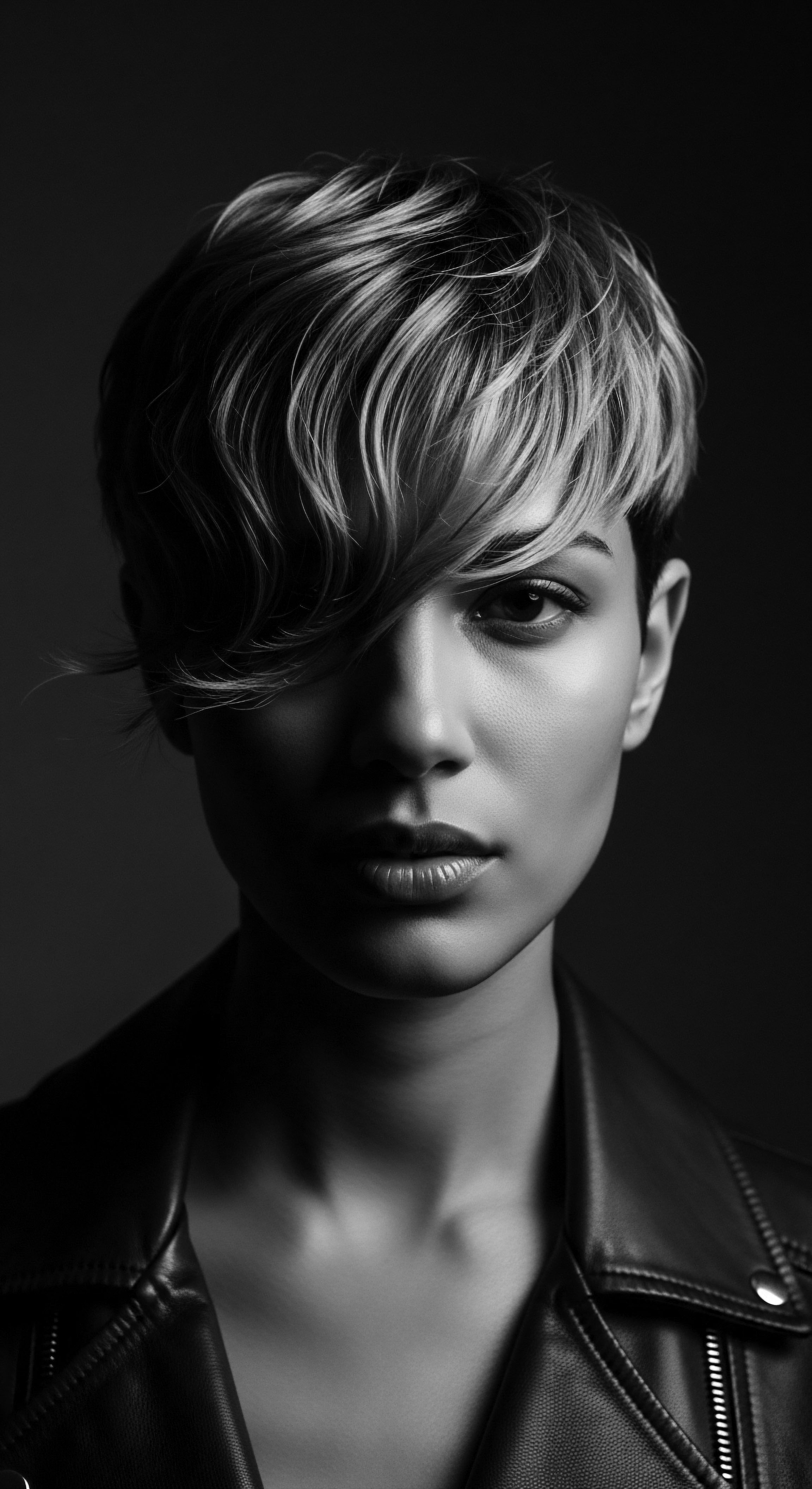
Reflection
As we consider the enduring presence of plant oils in the care of textured hair, we find ourselves standing at a crossroads where ancestral knowledge meets contemporary inquiry. The story of these botanical extracts is not a mere scientific discourse; it is a profound meditation on heritage, resilience, and the intimate connection between self and legacy. From the communal oiling rituals passed down through generations to the evolving scientific understanding of molecular interaction, plant oils continue to hold a distinguished place in the soul of a strand.
The efficacy of plant oils against hair breakage and moisture loss for textured hair is more than a hypothesis; it is a lived reality for countless individuals whose hair journeys are intertwined with the wisdom of their forebears. The very coils and kinks, often deemed “difficult” by external standards, have historically been celebrated and maintained with these natural elixirs, affirming their inherent beauty and strength. In every drop of a nourishing oil applied to textured hair, there is an echo of hands that cared before, a silent tribute to traditions that persisted despite oppression.
The journey to understand textured hair care is an ongoing one, but its deepest truths are often found by looking back, by honoring the practices that sustained our ancestors. Plant oils remain a powerful bridge, connecting us to a heritage of self-care, community, and the profound wisdom that nature so generously offers. This wisdom, like the strands it protects, continues to grow, adapting and strengthening with each passing season.
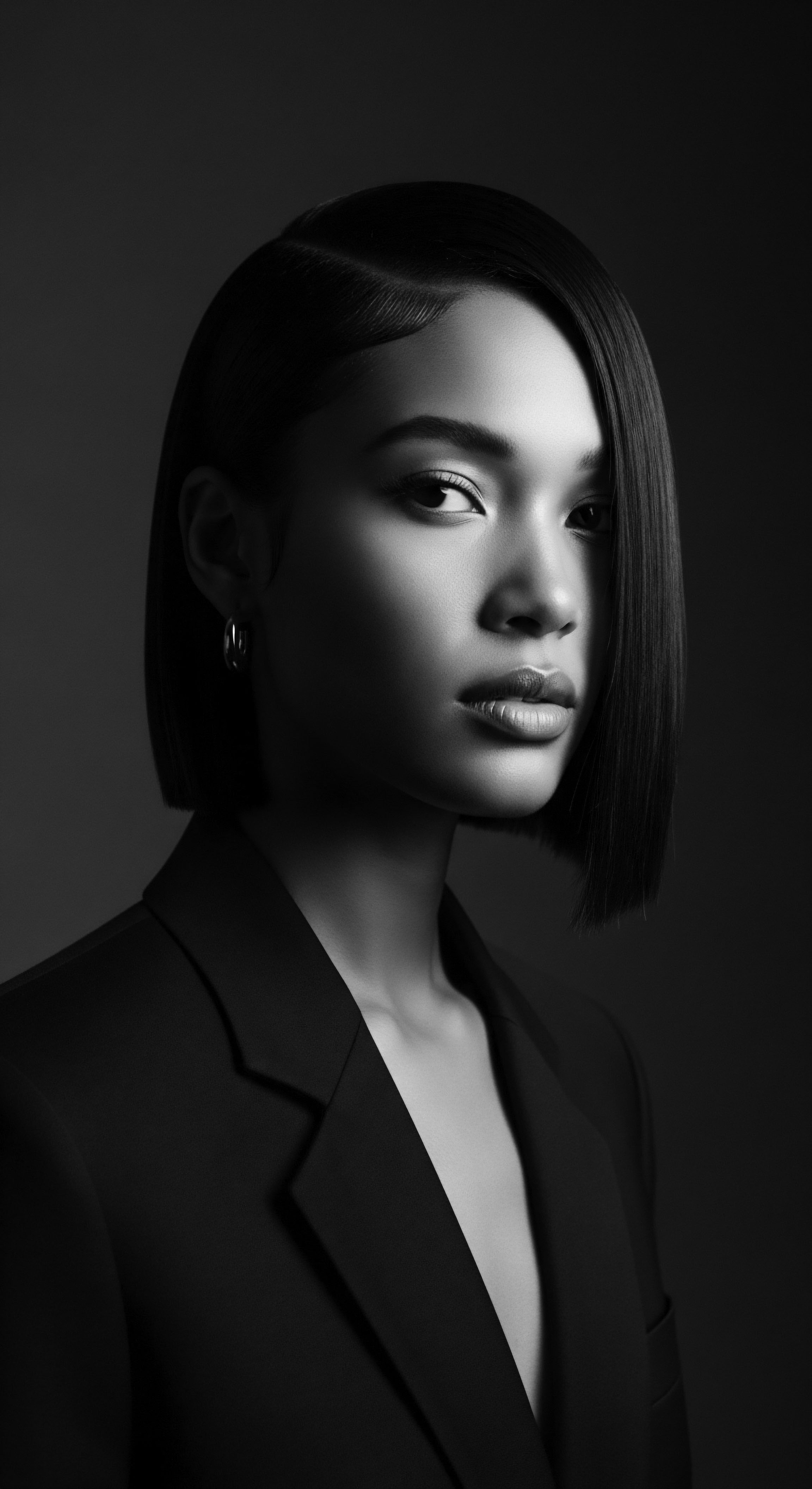
References
- Nkwate, Jeanette. “Are We Really Not Supposed To Use Oils On Natural Hair?” Refinery29, 14 Apr. 2022.
- Nkwate, Jeanette. “Braids, Wigs, & Wash Day Routines ❉ 4 Black Women On The Meaning Behind Their Hair Rituals.” Refinery29, 29 June 2022.
- Mbilishaka, Afiya. “REFINERY29 ❉ Braids, Wigs, & Wash Day Routines ❉ 4 Black Women On The Meaning Behind Their Hair Rituals.” Kreyol Essence, 1 Oct. 2022.
- Abdel-Fattah, Doaa. “The Untold Story of Jojoba Oil in Black Beauty.” BeautyMatter, 4 Feb. 2025.
- Chidambaram, G. et al. “Investigation of penetration abilities of various oils into human hair fibers.” ResearchGate, 5 Dec. 2024.
- Slimani, Amina, et al. “Ethnobotanical study of traditional cosmetics in Ouazzane region, Morocco.” Indo American Journal of Pharmaceutical Research, 2016.
- Océane Nyela, “Braided Archives ❉ Black hair as a site of diasporic transindividuation.” Thesis, YorkSpace, 2021.
- Gambiza, Ruth. “African hair ❉ exploring the protective effects of natural oils and silicones.” UAL Research Online.
- Mkhize, Nokuphila. “Ancient African Hair Growth Secrets For Healthy Hair.” Sellox Blog, 4 June 2021.
- Ajmera, Ananta Ripa. “Everything You Need To Know About The Ancient Art Of Hair Oiling.” Newsweek, 24 Aug. 2022.
- Abdel-Fattah, Doaa, et al. “What Every Dermatologist Must Know About the History of Black Hair.” Journal of Drugs in Dermatology, vol. 22, no. 11, Nov. 2023, pp. 1060-1065.
- Amorim, T. et al. “Penetration of Vegetable Oils into Textured Hair Fibers ❉ Integrating Molecular Matrix Assisted Laser Desorption Ioni-Zation Time-of-Flight Mass Spectroscopy (MALDI TOF/TOF MS) Analysis with Mechanical Measurements.” MDPI, 2024.
- Dias, M. “Hair Cosmetics ❉ An Overview.” International Journal of Trichology, vol. 7, no. 1, 2015, pp. 2-15.
- Keis, K. et al. “Investigation of penetration abilities of various oils into human hair fibers.” Journal of Cosmetic Science, vol. 56, no. 5, 2005, pp. 283-295.
- Bhanot, R. et al. “The Complex Architecture of Plant Cuticles and Its Relation to Multiple Biological Functions.” Frontiers in Plant Science, 2021.
